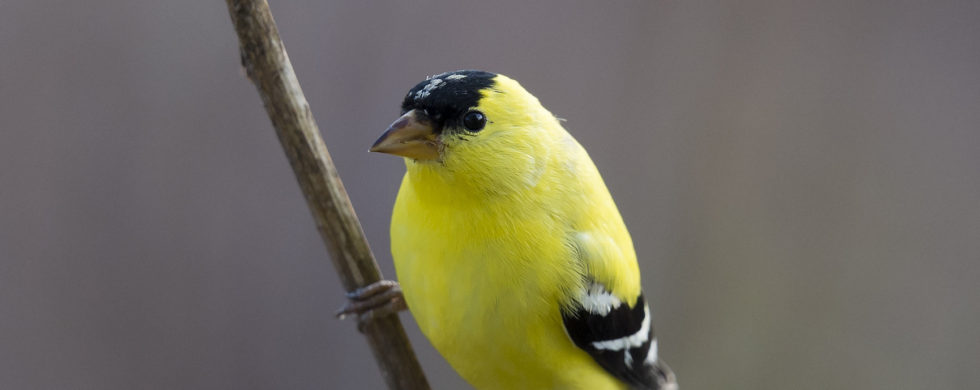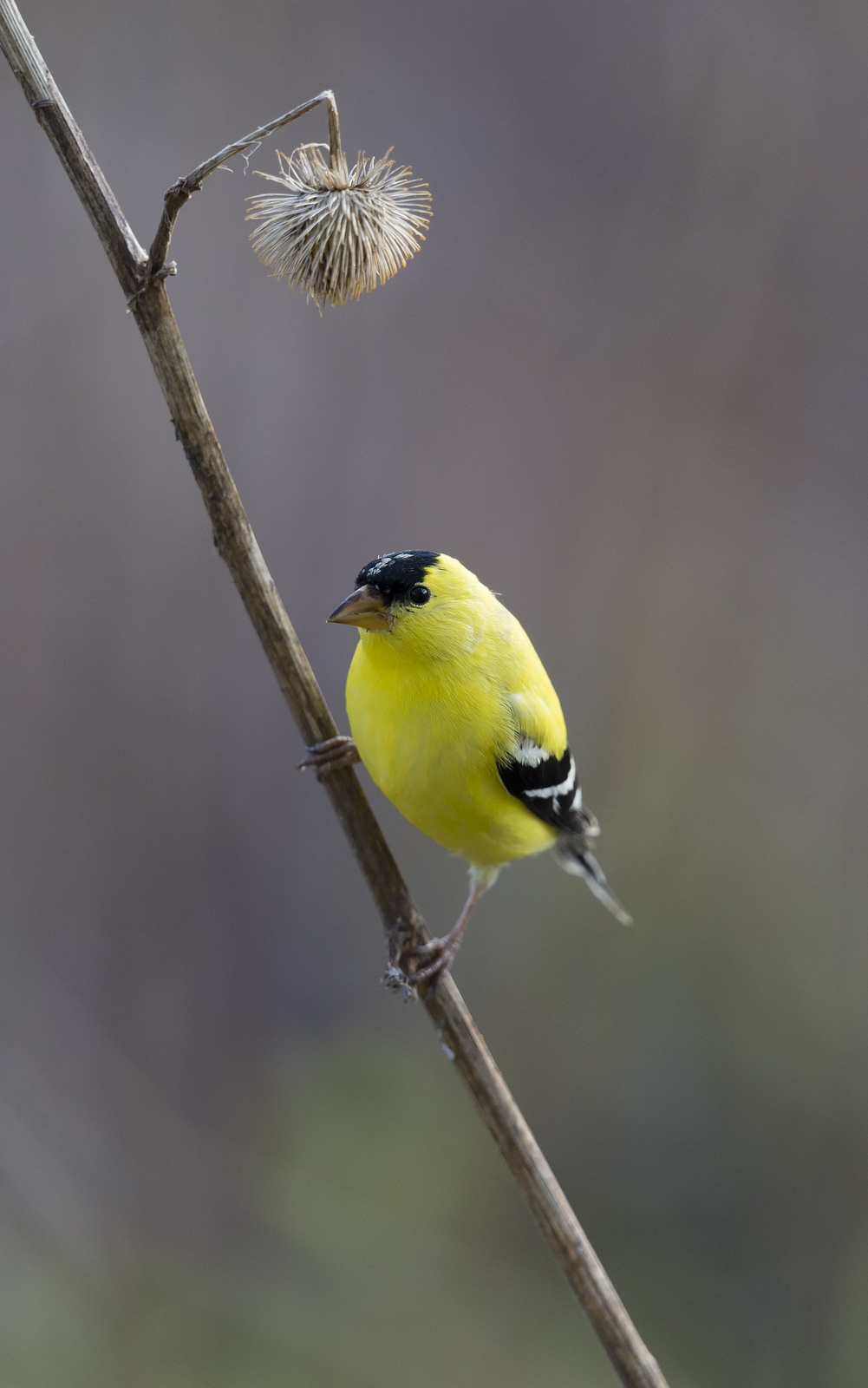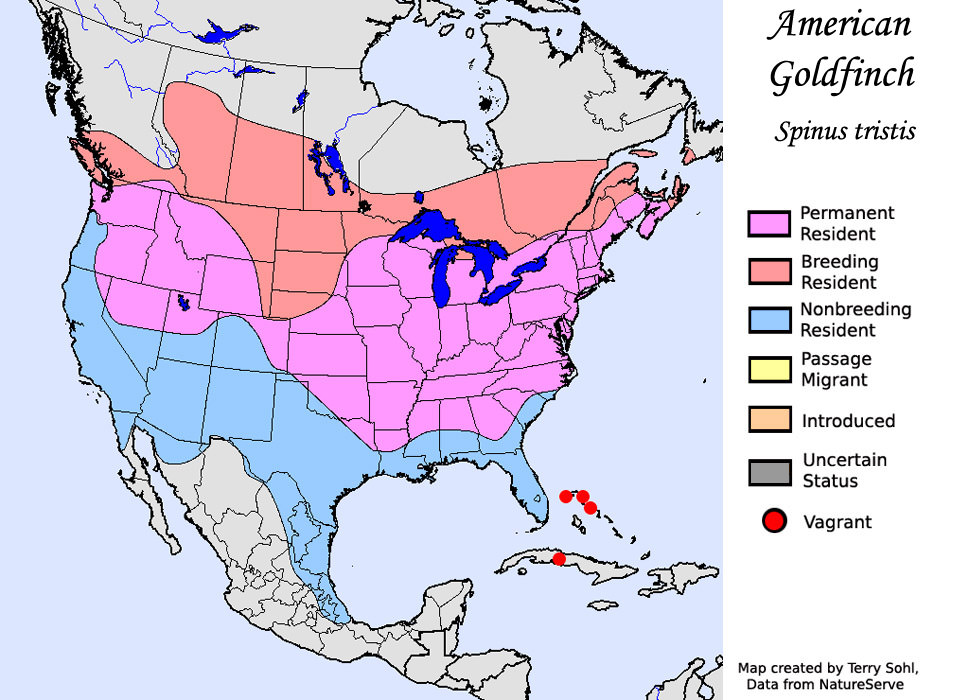
31
2017A Golden Life
Shot of the Month – December 2017
 This month a dash of gold to help ward off those winter blues. The American Goldfinch (AG) is a very popular, triple threat kinda bird. First, the bright lemon yellow of the male in full mating plumage is a visual wonder. After a long winter, nothing gives a jolt of hope like catching a glimpse of that bright yellow near the end of spring — it is a clear indication that warmer weather is just around the corner. Second, the AG is not only a looker but also renowned for its lovely song. And last, the AG flies with a bouncy, undulating pattern that is fun to watch — the males often call while singing to draw attention to themselves. Triple threat, and not shy about showing it off.
This month a dash of gold to help ward off those winter blues. The American Goldfinch (AG) is a very popular, triple threat kinda bird. First, the bright lemon yellow of the male in full mating plumage is a visual wonder. After a long winter, nothing gives a jolt of hope like catching a glimpse of that bright yellow near the end of spring — it is a clear indication that warmer weather is just around the corner. Second, the AG is not only a looker but also renowned for its lovely song. And last, the AG flies with a bouncy, undulating pattern that is fun to watch — the males often call while singing to draw attention to themselves. Triple threat, and not shy about showing it off.
The AG prefers open country where weeds thrive, such as fields, meadows, flood plains, as well as roadsides, orchards, and gardens. The AG is also a frequent visitor to bird feeders.
As part of the finch family the AG has a short stocky bill that is useful for extracting seeds from the seedheads of thistles, sunflowers, teasel, dandelion, ragweed, mullein, cosmos, goatsbeard, alder and other plants. This small finch is strictly vegetarian though they may eat the occasional insect inadvertently – hey, we’ve all been there; but generally they eat seeds almost exclusively. Unlike most finches, the AG uses its agile feet extensively to grip the stems of seedheads while feeding. (source)
This strict diet is a problem for Brown-headed cowbirds. How so? Well, the Brown-headed cowbird lays its eggs in other bird’s nests and let’s those parents raise their chicks. It is an incredibly lazy, if not brilliant parenting approach. This strategy fails however if the egg is placed in a goldfinch nest. Once hatched, the poor cowbird chick rarely survives more than three days in their adopted home as they cannot get enough nutrition from that all-seed diet that goldfinch parents feed their chicks.
The AG nests later than most other birds, usually around June or July, to allow the birds to feed on the abundance of milkweed and thistle present at the time of the summer.

American Goldfinch Range (source)
The AG can be found across most of the United States though these finches will migrate during the winter. Birds in northern areas will move south just enough to reach areas where the minimum average January temperature is no colder than zero degrees Fahrenheit. Wow, that is precise.
The AG is the state bird of Iowa and New Jersey, where it is called the “Eastern Goldfinch”, and Washington where it is called the “Willow Goldfinch”.
The AG is not threatened by human activity and is widespread throughout its range. The clearing of forests by humans, though harmful to many species, has benefited the AG. Clearing of woodlands reduces the number of other birds and creates open spaces where weeds thrive — the preferred habitat for AG.
Good looks, favorable and expanding habitat, and a crowd favorite – for this little finch life is indeed golden.
Until next month….
Nikon D4S, Nikon 600mm, f/4, 1/1000s, ISO 1100,
